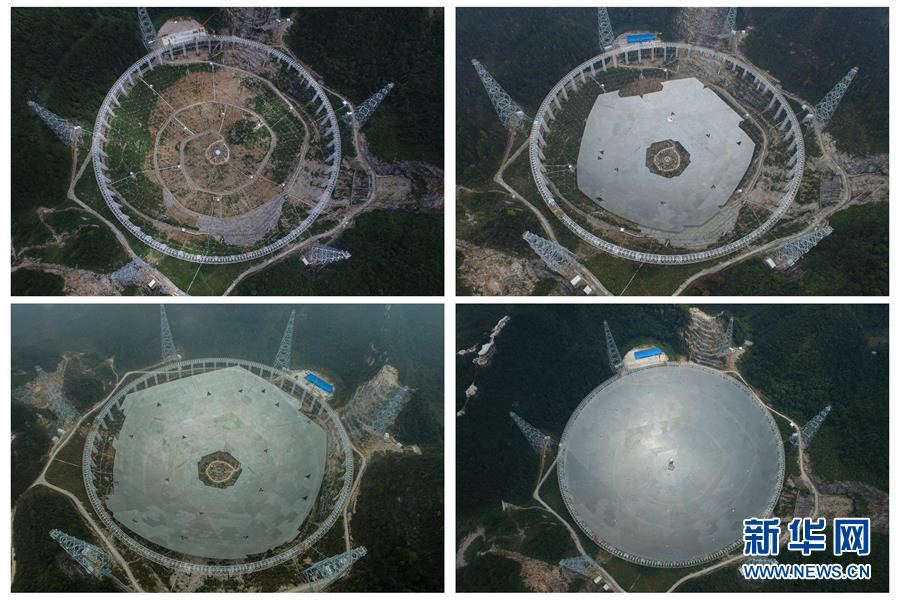CCTV9英语新闻:世界最大射电望远镜即将建成
世界最大射电望远镜的建设工作正在贵州进行,将于9月份完工。
Construction on the world's biggest radio telescope is underway in Guizhou province in southwest China. It's due for completion in September. It's called the Five-hundred-meter Single-Aperture Spherical Radio Telescope or FAST. In a few days' time, its last reflector panel will be installed. When it's fully functional, the telescope should be able to detect radio signals from the deep universe, more than one-thousand light years away. It will help the search for intelligent life in outer space and bring new discoveries about the universe.
Experts say this gigantic radio telescope will fast forward China's astronomical level by at least 10 years... When its completed, it will be the world's biggest single-aperture spherical radio telescope, and the most sensitive radio telescope in human history.
The telescope has a 1.6 kilometer circumference. It consists of nearly 4,500 panels and has been built in a natural karst depression to shield it from electromagnetic disturbances.

Construction on the world's biggest radio telescope is underway in Guizhou province in southwest China.
In just few months, it will require "radio silence" within five kilometers. All residents have to move away, and no cell phone signals are allowed.
The project began in 2011. It costs nearly 1.2 billion yuan... of about 185mln US dollars.
Yue Youling is an associate researcher for the National Astronomical Observatories. He is getting ready to discover the unknown. His first priority is to debug the radio telescope when it's completed, and then to search for pulsars in the universe.
"We have found more than 2,500 pulsars. We hope we can find at least double that number with this gigantic radio telescope. For example, very small or very big pulsars. Understanding the fundamental physics of pulsars will help us understand the "Big Bang." Now we only know what happened after the Big Bang, everything before that relies on our calculation. Therefore, there are a lot of uncertainties. It depends on the basic parameters of physics," said Yue Youling, associate researcher of National Astronomical Observatories.
Yao Rui is another research fellow from the National Astronomical Observatories who's been with the FAST project from very beginning. For her, this gigantic radio telescope is more like a old friend, than a giant telescope. Part of her job concerns one of the core parts of the radio telescope - accurately adjusting the position of the "Focus", so that the radio telescope will be able to receive more energy from the universe.
"The telescope will pick up radio signals, actually receiving energy from the universe, so we tried to deform the reflection panel from spherical to parabolic... and to accurately position the 'Focus'. What we have done is to let the 'Focus' receive more radio signals. FAST is the world's biggest, you see the area is 500 meters in diameter. And we see the reflective panels can transform from spherical to parabolic. No other radio telescope in the world has this feature," said Yao Rui, associate researcher of National Astronomical Observatories.
Yao says Fast has a fixed spherical shape, but an' active surface'. In just few days, the last reflector panel will be installed, which means this mega construction will soon be completed. The scientists say there will still a lot of debugging to do. After all, no one has ever used a telescope this big before.







